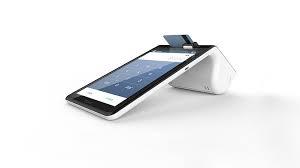Seven Actions to Create Organization Credit

How do you create your enterprise credit? Here's what Wells Fargo Bank has stated with regards to separating Individual and Business Finances...
"The longer you delay establishing business credit,
the longer you delay taking advantage of organization loans."
By strengthening your business credit, you can not must use the owner or shareholder(s)' guarantee(s) for loans, leases, credit cards as well as other sources of debt financing. If your company features a robust operating history and financials to help this, you could conveniently build your business' credit. For those who haven't currently performed so, do the following as quickly as possible to develop your little enterprise credit:
1. Be sure you happen to be registered with Dun and Bradstreet and have a D&B number. Then sign up for the free self-monitoring system.
2. Obtain credit cards from Staples, Office Depot or other office product provider up to the amount allowed with no guarantee. Use these cards to purchase your office supplies. Obtain credit cards from Home Depot, Lowe's, or other office improvement entity. Use these to purchase any repair or cleaning items for the office.
3. If your business has lines of credit with any of your vendors or suppliers, ask that they report this information - and the performance - to D&B. If you do not have any lines of credit, ask for them.
o Each year, see if you can increase the size of the credit line. Ensure that you use it as appropriate to keep the credit line there. Example: If you have a $50,000 credit line but always pay within 10 days by check, your credit line will disappear. You should place your orders using the credit line, then pay off the credit line every 30 - 60 days.
4. In the event you possess a enterprise loan from a bank or other economic institution, even though it's assured by you because the owner or by another individual (i.e., investor), ensure that that the loan is beneath the COMPANY'S tax id and is reported around the COMPANY'S credit report. All banks report to D&B regularly. Therefore, making consistent, on-time payments on your company's bank loan can very positively impact the company credit.
5. Check your D&B report quarterly, but no less than annually. Ensure that any loans, leases, or other debts showing are correct. Many times entities report when they file a UCC (Uniform ) but do not report when the loan is paid off. Hence paid off/retired loans and leases may still be showing around the company's credit, which makes it seem like the organization has a much higher debt ratio than it actually does.
6. Pay your suppliers inside their specified terms. Be certain that you just are working with no less than two suppliers who report to D&B and/or Experian. Otherwise, your great payment record will be completely unknown. If the supplier does not report to Dun and Bradstreet, request a Letter of Payment History from the supplier and submit it to D&B to add to your business' credit file.
7. Provide reviewed or audited financial statements to D&B. You may not want to provide these because your company is private but be aware, that lending entities often provide abbreviated information to D&B for the purpose of reporting. You want D&B to have accurate information. If you still are leery about releasing your company's full financial statements, consider providing just the annual revenues and the balance sheet (or a snapshot of it) via a statement from your CPA.
Lastly, you should possess a organization program. Banks along with other lending institutions will examine the company's credit profile, its monetary history, financial projections, as well as the organization program in creating its choice. Should you usually do not possess a small business, it certainly can not aspect in to the decision-making.
Get extra details about how to build business credit

